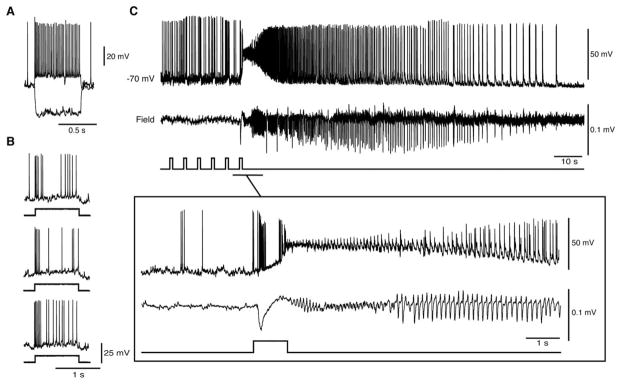FIGURE 2.
Optogenetic activation of parvalbumin (PV) interneurons in the whole-cell configuration triggers low-voltage, fast (LVF) ictal discharges. (A) Electrophysiological characterization of an entorhinal cortex fast-spiking PV interneuron during injection of hyperpolarizing and depolarizing current pulses (membrane potential [peak velocity]=−70mV; parameters of the intracellular current pulses=600 milliseconds, −200 and 160pA; membrane resistance=121MΩ; access resistance=36MΩ). (B) Responses generated by the same cell as in A to 1-second light pulses delivered at 3-minute intervals. Note that similar action potential discharges are generated over time. (C) Optogenetic activation of this interneuron (and of the concomitant LVF ictal discharge) by a train of 1-second light pulses at 0.2Hz. The onset of the ictal event is expanded below to further reveal the LVF pattern.

